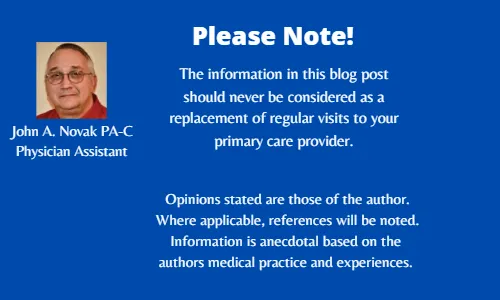
This is a republished post from March 22, 2022
Rotating acetaminophen and ibuprofen
For my first post about Medical Myths, I wanted to present a myth that has plagued me and the medical world, here in the States at least.
QUESTION) Your child has a fever; what do you do?
Alternate acetaminophen (Tylenol) and ibuprofen (Motrin)
WRONG ANSWER!!!
So, why is this common belief wrong?
Well first off, it has never been studied. I did an exhaustive search about this practice several years ago and found absolutely no evidence to back it up.
It always bothered me from a pharmacologic standpoint (pharmacologic is the science behind the medicine.)
Every medication has what is known as a half-life. This is essentially the time it takes for a medication to break down in your system to be at half its original strength.
Medication dosages are based on the half-life of the medication. Both acetaminophen and ibuprofen have a half-life of 2-3 hours. That means that a 100 mg dose of the medications will be around 50 mg in 2-3 hours in your body.
If you are rotating the two medications, then you are giving one of the medications every 4 hours, which means that you are giving a dose of Tylenol every 8 hours and ibuprofen every 8 hours in alternating fashion.
Neither one of these medications is designed to be given in this timeframe.
How should it be done?
There is an entire other debate as to which medication works best for fever control. Studies show that they are pretty much equal at reducing fever.
My recommendation to my patients, or their parents, is to choose which medication you find works best for your child and then stick with that one medication for general fever control.
Can they be used together?
This is one of my favorite treatment options for parents. This works especially well when the child wakes up in the middle of the night with a high fever and the entire house is awake and buzzing.
**This presentation with a high fever is the ideal time to give a dose of BOTH medications. They work in different pathways and work great together.
**
This is also helpful when the child has a fever over 102.5 F or 39 C.
As a side note, never just treat a fever and ignore it. If your child continues to run a fever for more than 2 days, you need to see their medical provider. A child younger than 3 months with a fever needs to be seen sooner.
A fever in a child can be very worrisome for a parent. Remember to keep your child well hydrated and treat as discussed above.
Until next time,
John Novak PA-C


Get some quality Hive merchandise to share the Blockchain.

Convert your crypto to HIVE with no KYC and rapid transfers.


Programs I Endorse
